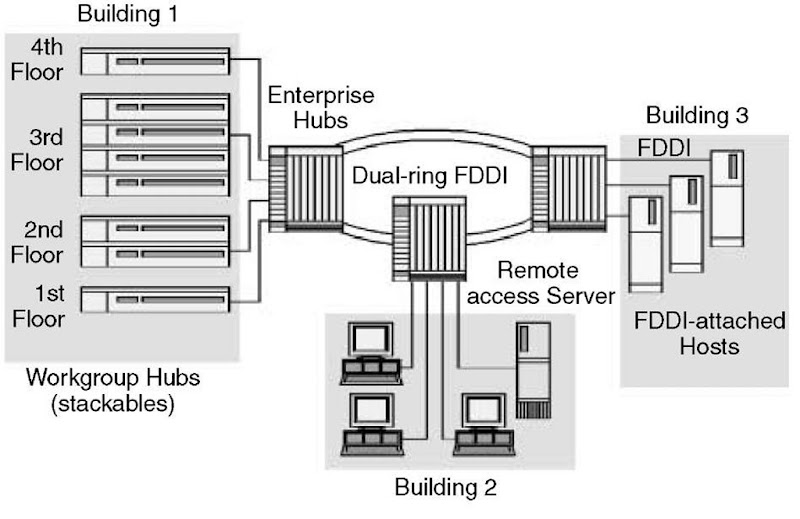Campus-area networks (CANs) provide high-speed connections between several hundred to several thousand users located within a group of buildings or floors and connected to various local-area networks (LANs). Typically, optical fiber is used for the connections. To ensure high availability for mission-critical applications, a Fiber Distributed Data Interface (FDDI) is the preferred type of network for the campus environment because of its self-healing, dual ring architecture (Figure 22). It is also capable of handling Ethernet and token ring traffic reliably. A drawback of FDDI is that there are no plans to upgrade it to gigabit speeds.
Gigabit Ethernet can also be used to build campus-area networks. This is a good choice if the organization has already standardized on Ethernet/Fast Ethernet because Gigabit Ethernet switches can simply be dropped into the existing environment to interconnect LANs in different buildings. If the organization has standardized using token ring, then a High-Speed Token Ring (HSTR) backbone would be the best choice. HSTR also provides an upgrade path to Gigabit Token Ring.
If different types of LANs must be interconnected, ATM is a better choice for the campus backbone. Layer 3 switches are most often used when ATM provides the connectivity for the campus-area network. A network layer switching standard known as Multi-Protocol over ATM (MPOA) defines a way for IP traffic to run in ATM cells within a campus network. Edge devices connect traditional LANs to an MPOA-capable network. In this manner, Ethernet, Fast Ethernet, token ring, FDDI, and other LAN traffic enter and exit the ATM network. Another benefit of ATM is that it can handle constant bit rate (CBR) services such as voice and interactive video.
Figure 22
A campus-area network based on FDDI.
Last Word
There are several viable technologies for implementing campus-area networks. The choice will hinge mostly on what types of networks must be interconnected and the types of applications that need to be supported. Other considerations include scalability and upgradability to higher speeds.

